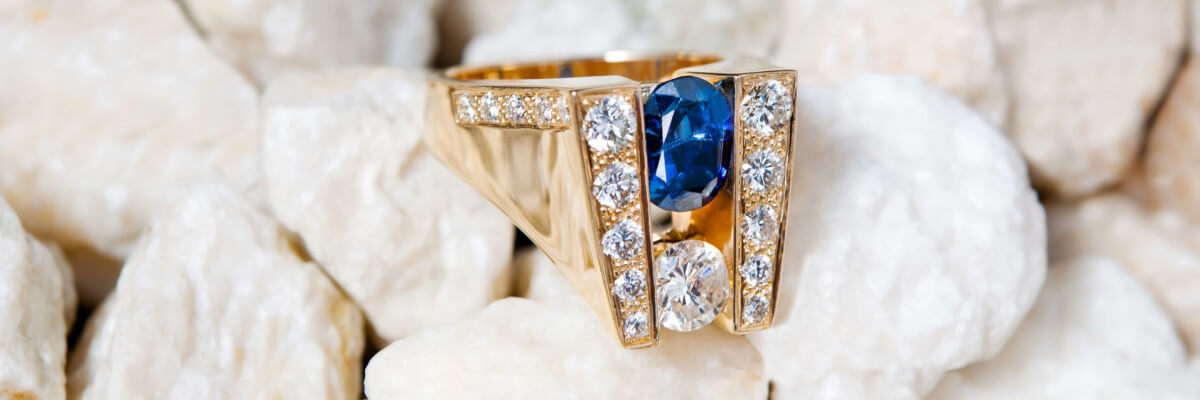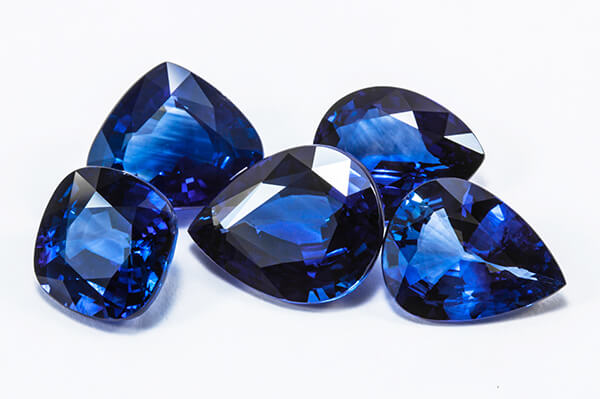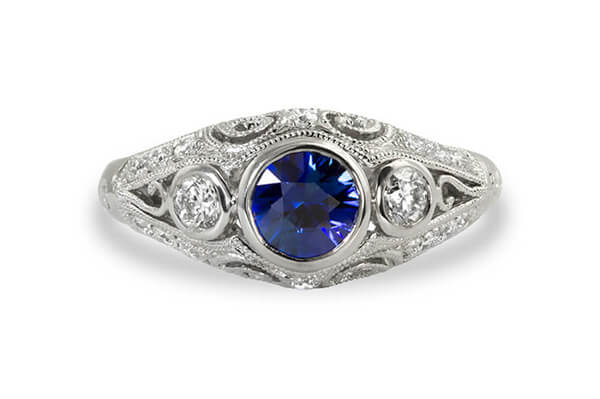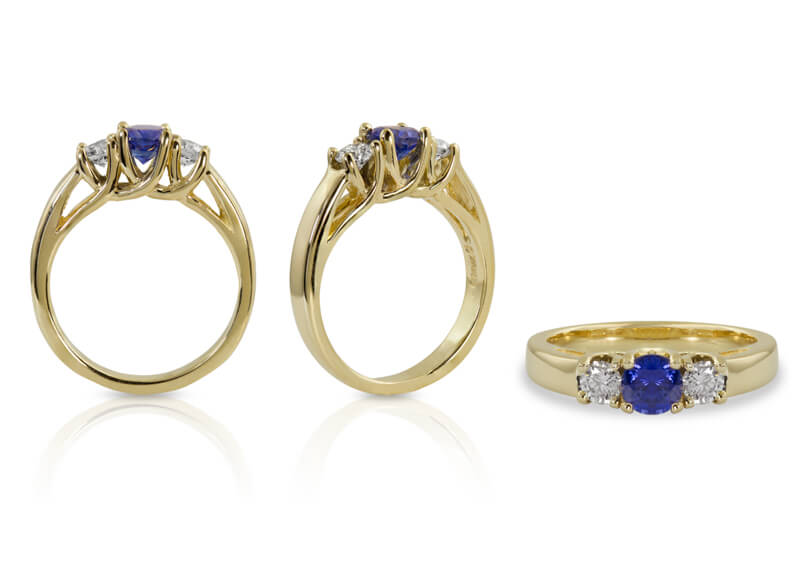
Prized as one of the most precious gems, Sapphires are one of the most beautiful and elegant stones in the world. Sapphire is associated with love and commitment which, along with its exceptional beauty, make it perfect for engagement rings. Penelope Cruz, Elizabeth Hurley and Princess Diana all wore Sapphire engagement rings. Kate Middleton now wears the beautiful sapphire engagement ring that Diana once wore.
The deep blue of a sapphire is distinctly regal. Rulers of ancient Persia wore sapphires, and for thousands of years, kings have worn sapphires to protect them from harm.
The Sapphire is also the September birthstone.
“A maiden born when autumn leaves,
Are rustling in September’s breeze,
A Sapphire on her brow should bind,
To bring her joy and peace of mind.”

Sapphire Color
Sapphires are made of the mineral Corundum, which is naturally colorless, and is the same mineral as the Ruby. Corundum in colors other than blue or red are called fancy sapphires. The color in the stone is caused by trace elements within the mineral. The blue in a Sapphire is caused by traces of iron and titanium, while the red in a Ruby is from traces of chromium.
Corundum is one of the hardest minerals in the world, second only to the Diamond.
True Sapphires can range from light to dark blue, and even greenish or purple blue. The rich deep cornflower blue Sapphire is the most sought after and expensive. Look for a Sapphire with a vivid velvety blue to violet blue color. It should be free of noticeable banding and dark or cloudy areas.
Watch out for “created” or “synthetic” Sapphires; these have been man-made in a lab. These stones can be beautiful and come at a lower price tag, but are not natural gemstones. Sapphires can also be improved with heat, which can remove milky areas, and create a more vivid color.
Sapphire Clarity
Natural Sapphires typically have inclusions, which are even present in the finest stones. A sapphire without inclusions of any kind is likely artificial. Fine needles, and inclusions that look like human fingerprints, are common as well as banding. A well-cut sapphire will make banding less apparent. Place a sapphire in a glass of water to see the banding in your Sapphire.
Some inclusions actually make a Sapphire more valuable, such as in Kashmiri Sapphires. Their silk inclusions give the sought after velvety appearance.


Sapphire History and Lore
Sapphires have been mined since 800 B.C. Their name comes from the Latin “saphirus” and the Greek “sapheiros,” which both mean blue. Their beautiful blue color was said to have painted the sky. The name can also translate to “dear to the planet Saturn” from the Hebrew “sappir”, and Sanskrit “sanipnya”.
Sapphires are holy to the Catholic church. It is said by some that the ten commandments were written upon Sapphire stone. They were said to be the correct stone for ecclesiastical rings as they symbolized heaven. Sapphires provided divine favor to the wearer, and kept him on the spiritual path.
Sapphire Properties
Sapphires are associated with intuition and can be used in meditation for clarity. They can open a blocked third eye chakra, which is the center for spiritual connection. They create a calm, focused mind, and bring wisdom to the wearer. Sapphires also assist with creative expression.

